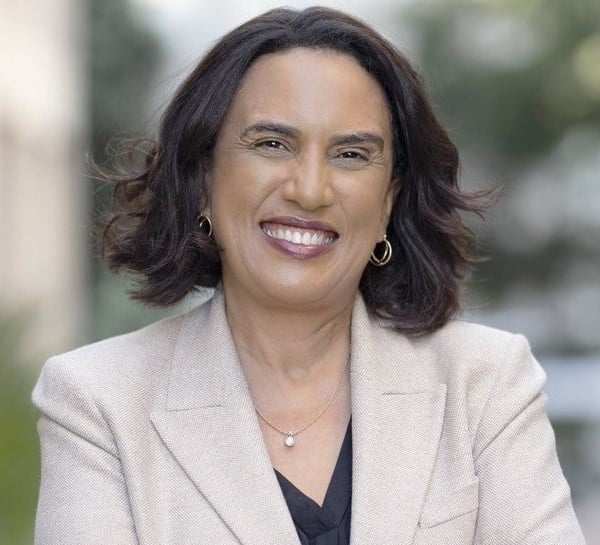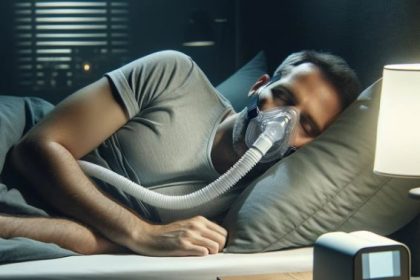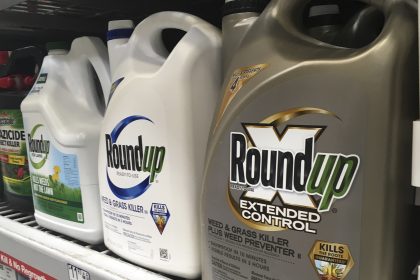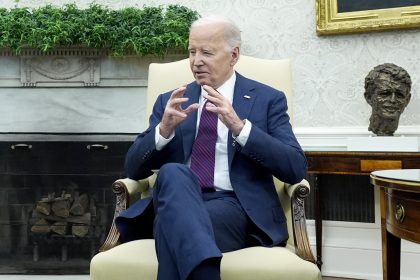JAMA Devotes Special Issue to Post-Dobbs Landscape for Clinicians, Patients

CHICAGO — This week’s special issue of the Journal of the American Medical Association offers a lengthy and often sobering dissertation on the already substantial impact of the U.S. Supreme Court’s decision to overturn Roe v. Wade this past June, and with it constitutional protections to a woman’s right to choose to have an abortion.
From the outset, the peer-reviewed medical journal adheres to the position, spelled out in an opening editorial by its new editor-in-chief Dr. Kirsten Bibbins-Domingo, that evidence-based care for early pregnancy “is well established and includes strong evidence for safe abortion as part of the reproductive health care spectrum.”
Over the course of several pieces of original research and eight scholarly viewpoints articles, the Nov. 1 issue of JAMA delves into the multitude of ways what the journal describes as “legal interference” in reproductive health is sowing chaos across the medical spectrum.
According to the editorial, legal interference in the provision of safe, accessible abortions is already causing clinicians to divert their time, attention and skills from other pressing health concerns.
As a result, Bibbins-Domingo writes, the United States’ already surging rate of maternal mortality — it stood at 23.8 deaths per 100,000 live births in 2020 — is expected to increase substantially as evolving abortion restrictions continue to “undermine physicians’ ethical and professional mandate to prioritize patients’ well-being.”
And the impact of the Supreme Court’s ruling in Dobbs v. Jackson Women’s Health Organization, the case that slew Roe, is going to be felt particularly harshly by members of the Black and Hispanic communities who already had to confront a disproportionate number of barriers, including low income and lack of health insurance, to access a legal abortion.
“Current estimates are that two-thirds of maternal deaths are preventable; the proportion of preventable maternal deaths will increase following the Supreme Court decision in Dobbs, Bibbins-Domingo writes.
In addition, the Dobbs decision may create a barrier to an essential component of cancer care for adolescents and young adults with new cancer diagnoses, such as lymphomas, leukemias, sarcomas and breast or reproductive tract cancers, the editor-in-chief continues.
As a result, these patients may no longer have access to standard fertility preservation techniques (e.g., genetic testing, sperm and embryo cryopreservation, and embryo disposal), she writes.
And that’s to say nothing of how clinicians are being forced to alter their current practices due to the heightened risk they now face in many states for providing what had been routine inpatient, outpatient, emergency or critical care.
In an interview with The Well News on Wednesday, Bibbins-Domingo, now just four months into her tenure as JAMA’s editor-in-chief, said her goal with the theme issue was “to try to put science and scholarly viewpoints together across a range of issues” related to reproductive health.
“Those in the medical community who have been closest to issues regarding reproductive rights, reproductive justice and reproductive health care have long warned that a more restrictive landscape would impact the way doctors and clinicians take care of patients and make decisions about that care,” she said.
Compounding the situation is the evolving patchwork of abortion restrictions across the country, and the resulting uncertainty that Bibbins-Domingo and several of the authors in the issue say is already having “a real chilling effect” on what clinicians can do, believe they can do or are worried about doing.
“I think those are some of the ideas that come across in this issue,” she said. “What we wanted to get across is that these types of restrictions really do have broad and far-reaching implications for evidence-based health care.”
Not Just a Red State or Blue State Issue
When tighter abortion restrictions have been litigated in the recent past — and particularly since Texas Senate Bill 8 went into effect on Sept. 1, 2021, the measure outlawing abortion at six weeks of gestation, even in cases of rape and incest — much attention in the media has been on local impacts — the closure of the only abortion clinic in a state, women having to travel to get an abortion, and so forth.
But Bibbins-Domingo said the tighter restrictions and near total bans in some states are affecting clinicians everywhere.
“On the one hand you’re seeing states that have the fewest restrictions seeing an influx of patients; on the other, you have states with evolving legislation where people aren’t sure, on a day-to-day basis, whether their clinic can operate or not,” she said.
“One of the viewpoint pieces in the issue focuses on how these new restrictions is radically changing how we practice emergency medicine and critical care,” she continued.
“I mean, you have people literally asking themselves what the law is on the books at a given moment … and that has an impact on the treatments that we use. Now something that might be highly effective, also has a consequence.
“This is happening across a range of states, though of course it’s most obvious in those with the tightest restrictions,” Bibbins-Domingo said.
Striving to Reach as Broad a Readership as Possible
Prior to becoming the first person of color and only the second woman to lead the journal and the JAMA Network earlier this year, Bibbins-Domingo was a professor and chair of the Department of Epidemiology and Biostatistics, and the first vice dean for population health and health equity, at the University of California San Francisco School of Medicine.
She also co-founded the UCSF Center for Vulnerable Populations at Zuckerberg San Francisco General Hospital and Trauma Center.
Remarkably, the current issue of JAMA is already her second “special theme issue” in the past three months. In September, she published an equally compelling edition of the subject of gun violence and the prevalence of mass shootings in the U.S.
Asked about tackling such hot-button issues, Bibbins-Domingo said JAMA strives to reach a broad audience on important topics.
“Clinicians may be a core audience, but we also want to write about science that is of importance to the general public and is of importance to policymakers,” she said.
“In the case of the current issue, we’re writing about restrictions on evidence-based health care that ha[ve] implications for patients and for the clinicians who are our primary audience. At the same time, the remedy to these restrictions involves many, many more people,” she said.
After a pause she added, “We would hope that everyone is reading this.”
Asked whether the timing of the issue — coming out just eight days before the midterm election — was a coincidence, Bibbins-Domingo barely paused a second time, sounding like someone who’s been in the publishing game for ages.
“I think if you’re in the business of trying to communicate science that helps clinicians and patients and the general public understand the issues that affect their health … and to make decisions about issues that affect their health, and hopefully, remove barriers to good health … you want to make sure that that information comes out in a timely fashion,” she said.
Related Podcast to Be Released This Week
Two of the viewpoint pieces in the current issue of JAMA deal with the impact the Dobbs decision is having on clinicians from a career perspective. Later this week, JAMA will release its latest podcast, this edition featuring an interview with three medical students who are taking a hard look at their decision to practice medicine in the current environment.
“They’d all been interested in training in obstetrics and gynecology, but now they understand that the training they’re likely to get in those subjects will likely look different in different states,” Bibbins-Domingo said.
“At the same time, they’re also confronting the fact that they have no idea what the field looks like going forward,” she said.
Bibbins-Domingo said the same uncertainties delved into on the podcast are also being felt by those who craft the curricula and oversee the training programs future clinicians will pass through.
“In one of the viewpoints in the current issue, the authors touch on what they call the ‘moral distress’ of the current moment,” she said. “That is, if you understand what the provision of evidence-based care is, and it is not something that is available for you to provide in a given situation, what does that mean for you as a practitioner?
“In other words, you’ve got people early on in their training and also at all points in their career, who are not only dealing with the shifting landscape of abortion laws across the country, but also this emerging gap between what evidence-based health care looks like and what they might be able to provide in a particular environment.
“You can imagine how this weighs on people who want to take care of patients in the best way possible,” she said.
Slipping momentarily back into her former life as an educator, Bibbins-Domingo said people “do still go into medicine because they have a desire to help people.”
“That’s the strong motivator. That’s what you’re always inspired by,” she said.
“I mean, I spent most of my life in a medical school, teaching medical students, and the thing that you’re always inspired by is seeing these young people who have these really strong motivations to provide care.
“Now, and this is where I think the phrase ‘moral distress’ really resonates, they’re being forced to reckon with laws that really clash with desire that often motivates people into these careers of service in the first place.
“Imagine what it’s like to be a young person in this field and being forced to come to an understanding of what it means to live in an environment where additional government restrictions might not allow you to practice medicine in the way that you want or in the way that you were trained?”
Espousing Perseverance
The magic eight ball question is whether things are likely to get a whole lot worse for clinicians before they get better.
“I think the environment we are experiencing right now, with the degree of uncertainty, especially in regard to the changing legislation within states, is particularly challenging and disruptive,” Bibbins-Domingo said.
“That said, as clinicians, I think that our job is always to figure out how to provide the best care for patients,” she said. “That’s why I think that getting information out there like we do in this themed issue is important. Hopefully, it will help clinicians and patients and the general public to continue to think of ways to allow evidence-based care to continue to happen.
“At the end of the day, it’s the job of clinicians to figure out how to provide the best evidence-based care for their patients that they can,” Bibbins-Domingo added.
Dan can be reached at [email protected] and @DanMcCue
























